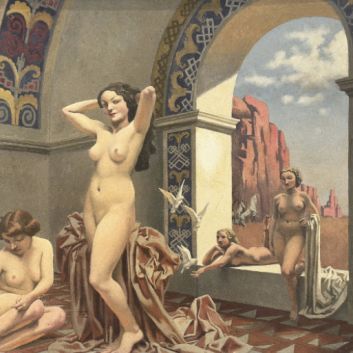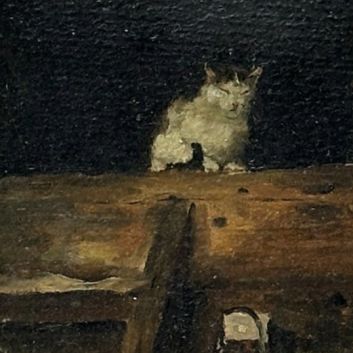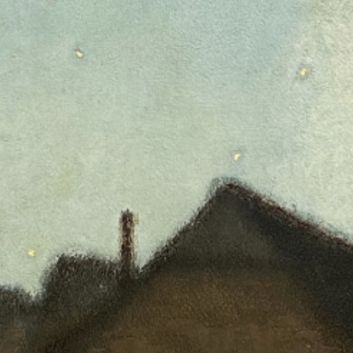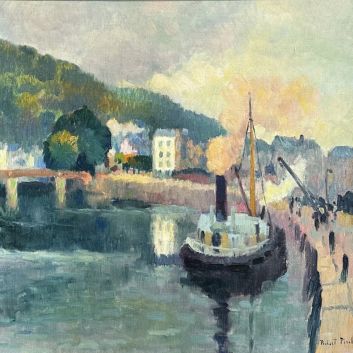Rating and value of paintings by Alphonse Osbert
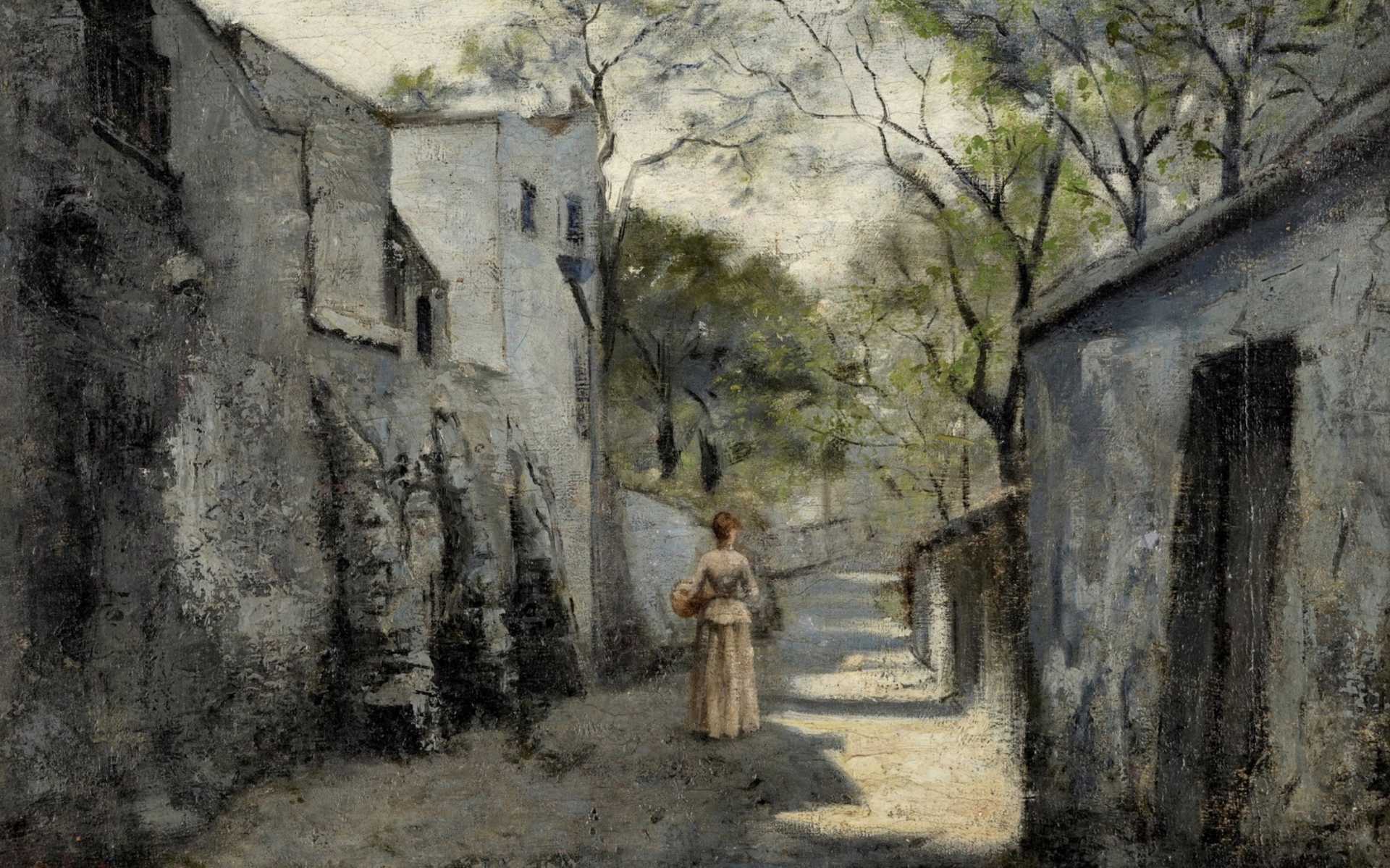
If you own a work by or based on the artist Alphonse Osbert and would like to know its value, our state-approved experts and auctioneers can help you.
Our specialists will carry out a free appraisal of your work, and provide you with a precise estimate of its current market value.
Then, if you want to sell your work, we'll point you in the right direction to get the best possible price for it.
The artist's rating and value
Alphonse Osbert's works are not very common on the auction market, but they are nevertheless highly prized by collectors.
His characteristically Symbolist canvases, in which the artist used gradations of blue and violet, in particular "osbert", are the most expensive on the market. Auction prices for his works range from €330 to €42,000.
For example, a painting by Osbert can fetch tens of thousands of euros in the auction room, as evidenced by his painting In the evening's tranquility, which sold for €42,000 in 2017.
Order of value from the most basic to the most prestigious
Table type | Results |
|---|---|
Marine painting | From €625 to €13,500 |
Genre scene | From €490 to €30,000 |
Landscape painting | From €335 to €42,000 |
Response in less than 24h
Artist's style and technique
Alphonse Osbert developed a singular style, halfway between symbolism and impressionism, creating a deeply meditative universe of ethereal tones. He favors the technique of oil on canvas, where he deploys a soft palette of blues and purples, lending his works an almost mystical atmosphere.
Her work is characterized by the depiction of lanky, often female figures, lost in idealized landscapes bathed in diffused light.
This delicately blurred treatment of light and shadow envelops his compositions in an aura of calm and serenity, recalling the mysteries of nature and the divine. His works, such as Les Chants de la Nuit and L'Âme des Étoiles, reveal inner worlds where natural elements seem to vibrate in silence.
Inspired by masters such as Puvis de Chavannes, he was interested in depicting cosmic harmony, seeking the essence of things through clean lines and pared-down compositions.
This taste for purity is echoed in his use of subtle nuances, which he manipulates with great delicacy to create a soothing softness. Osbert is also close to the works of Maurice Denis andOdilon Redonexploring themes of spiritual contemplation and harmony with nature.
Through this meditative aesthetic, he touches on a timeless dimension, where the viewer is invited to suspend time and plunge into a poetic and universal vision of the world.
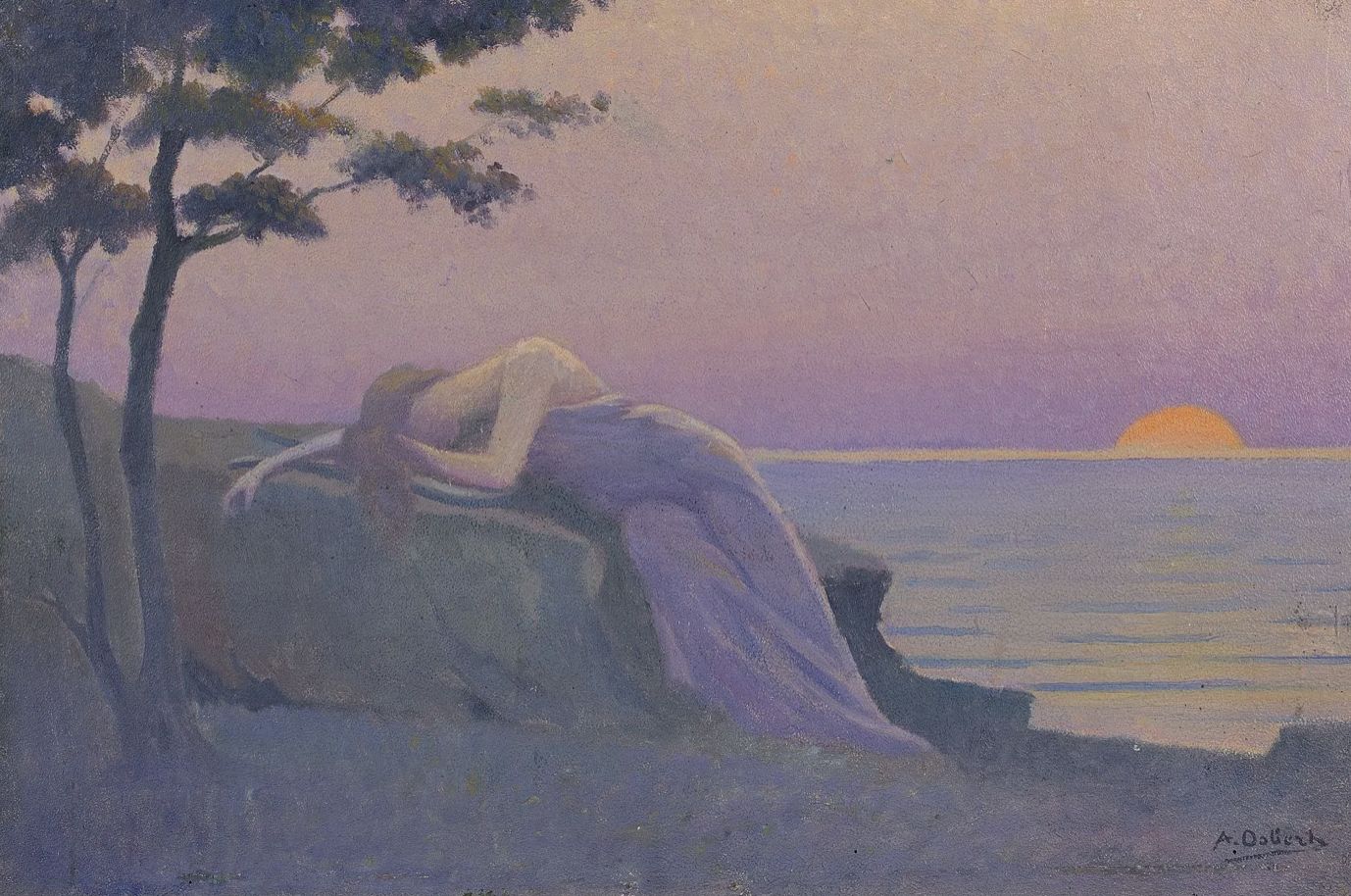
Alphonse Osbert's career
Alphonse Osbert's career was marked by an inner artistic quest, where symbolism and spirituality came together. Born in Paris in 1857, he turned to painting at an early age, first studying at the Beaux-Arts under the academic influence of the masters of the day.
However, it was his encounter with Symbolist currents and the mystical art of Puvis de Chavannes that transformed his artistic path. Abandoning realist themes and academic influence, Osbert turned to a poetic, inward-looking style, imbuing his works with an almost sacred aura.
He joined the circle of Symbolist artists and took part in the Salons de la Société nationale des Beaux-Arts, where his works attracted attention for their singularity and gentleness.
In the 1890s, Osbert truly found his style, which he described as "neo-impressionist", exploring landscapes bathed in moonlight and isolated figures in dreamlike scenes.
This style met with notable success at the Salon de la Rose-Croix, where its artistic language, imbued with mysticism and contemplation, resonated particularly well with Symbolist audiences.
Osbert was recognized for his harmonious compositions and subtle use of color, which invited a form of introspection. The artist was also supported by art critics such as Charles Morice, who saw him as a painter of the soul, capable of transcending material appearances.
Over the years, Osbert continued to exhibit, while evolving towards an increasingly pared-down, almost meditative style of painting. He received major public commissions, including decorations for institutions such as the Paris Observatory, where he painted monumental works inspired by mythology and astronomy.
These projects testify to his ability to capture the essence of human and cosmic nature in compositions of great simplicity and soothing depth.
Far from the Parisian social scene, Osbert maintained a certain discretion throughout his career, preferring to devote his energies to developing a personal universe marked by a profound spiritual quest.
His work, long unrecognized by the general public, was rediscovered in twentieth-century artistic and academic circles, who saw him as a precursor of mystical symbolism and an artist who transcended the boundaries of his time.
Today, Osbert is appreciated for the inner richness of his career and for his serenely beautiful compositions, which remind us that art can be a place of recollection and harmony with the world.
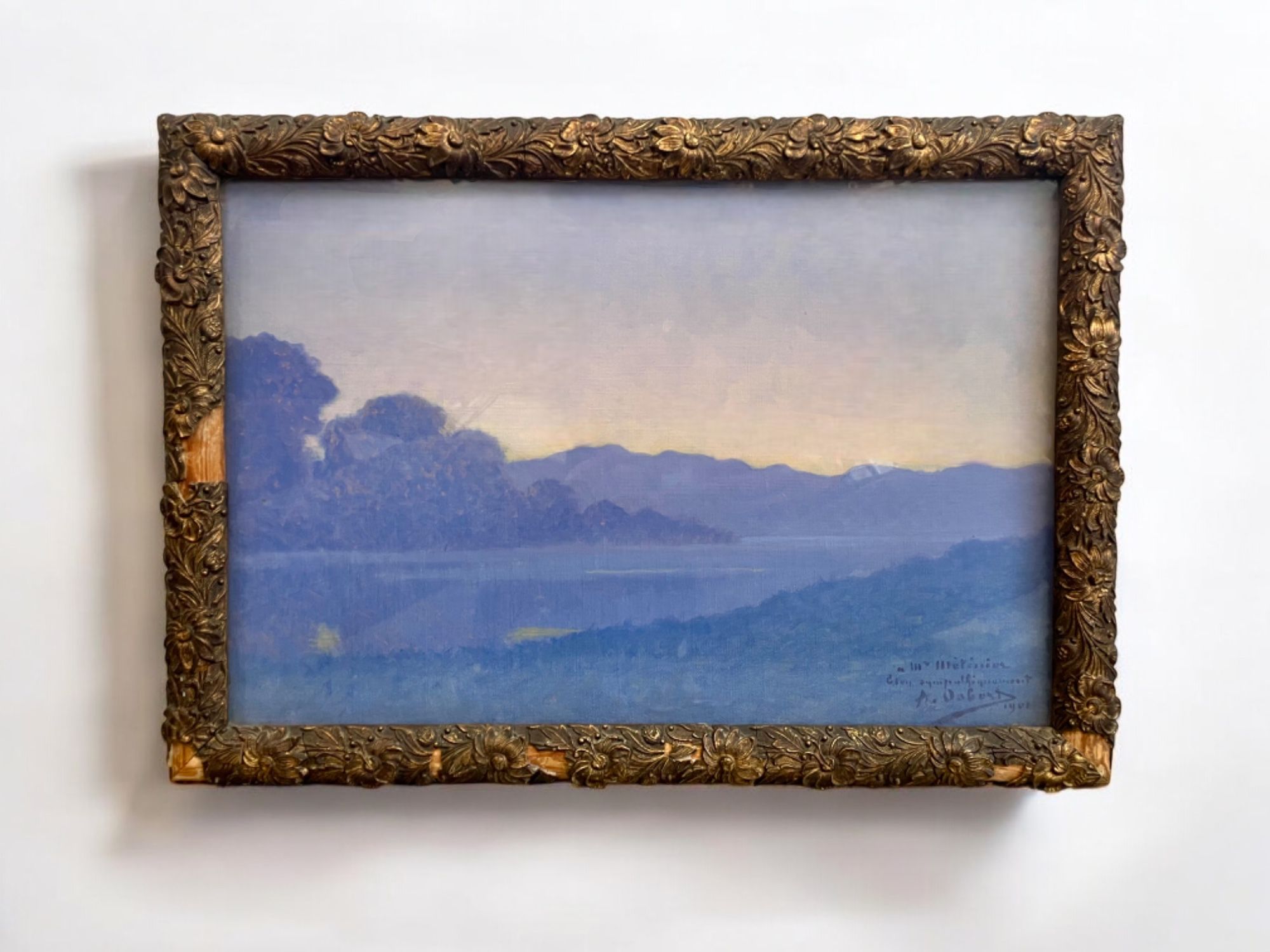
Focus on an Osbert mountain landscape
This painting by Alphonse Osbert transports us into a world where nature stands as a sanctuary of calm and mystery.
Playing with soft, misty shades of blue and violet, Osbert constructs a twilight scene that invites contemplation, evoking a palette of colors carefully selected for their ability to move.
The lines of the mountains cut softly across the horizon, bathed in a diffuse light that seems to come from the last rays of daylight, while the surface of the water delicately reflects these nuances, creating a harmonious dialogue between sky and land.
The landscape unfolds in superimposed strata, each shot revealing a little more depth while maintaining a serene harmony.
The depiction of vegetation in shadowy silhouettes reinforces this sense of immensity and solitude, suggesting a world both tangible and ethereal.
The mastery of gradation and the choice of cool colors suggest a world suspended between reality and dream, where the blurred contours of natural forms seem to fade into the ambient atmosphere.
This melancholy, almost mystical atmosphere is accentuated by the absence of any human presence, as if to remind us of nature's solitary grandeur in the face of man's gaze, inviting deep introspection.
True to his Symbolist aesthetic, Osbert avoids superfluous detail, preferring to evoke a feeling, a state of mind, rather than a precise representation.
The finesse of his brushwork reveals a delicacy in the treatment of natural elements, each touch becoming visual poetry.
The ornate, finely-worked frame that surrounds the work also contributes to this timeless ambience, reinforcing the impression of a painting that is as much a window onto infinity as a fragment of a reinvented world.
With this poetic vision, Osbert invites us to reflect on the beauty of the landscape and man's place in a sublime universe, where silence and contemplation take on their full value.
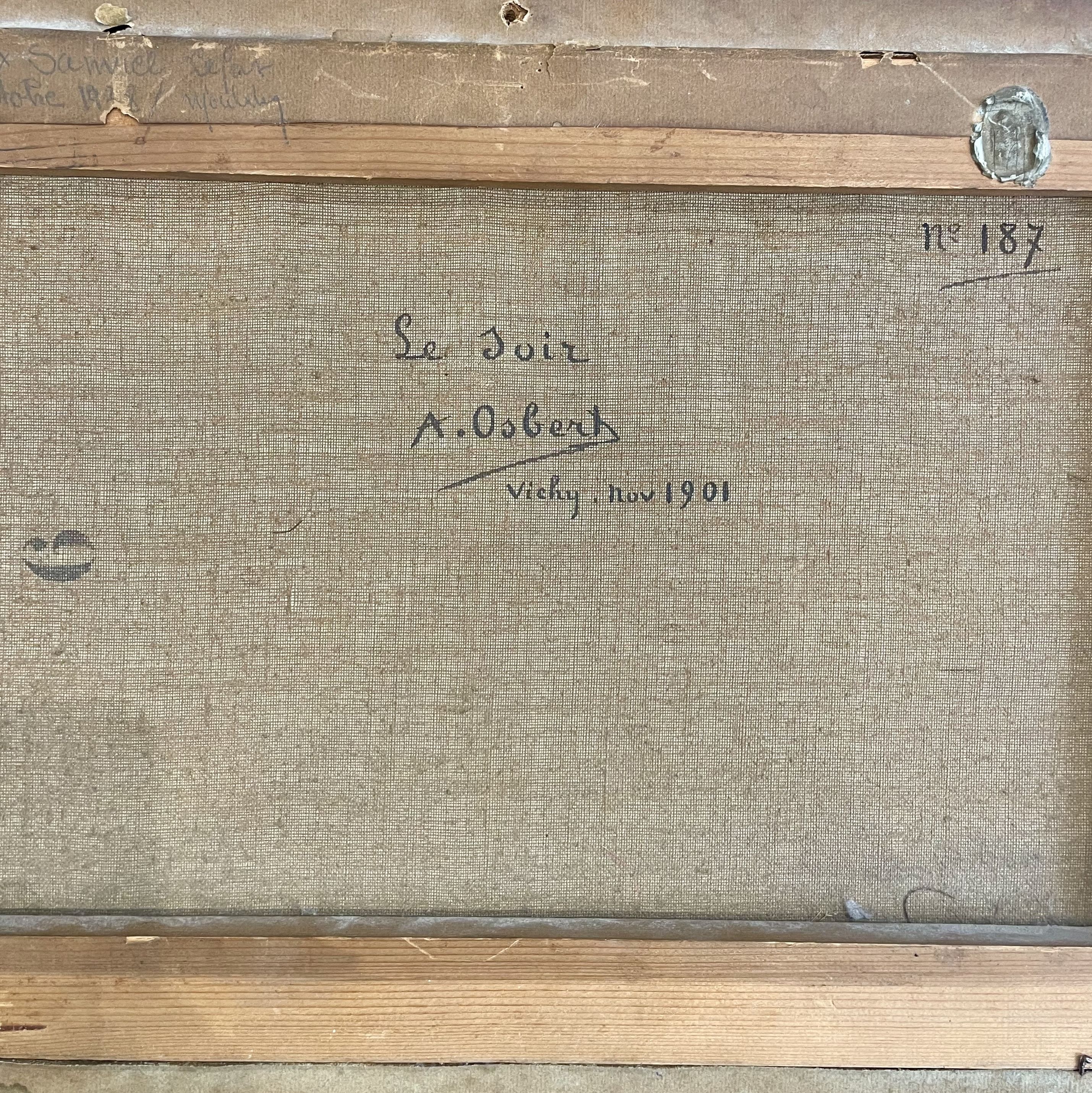
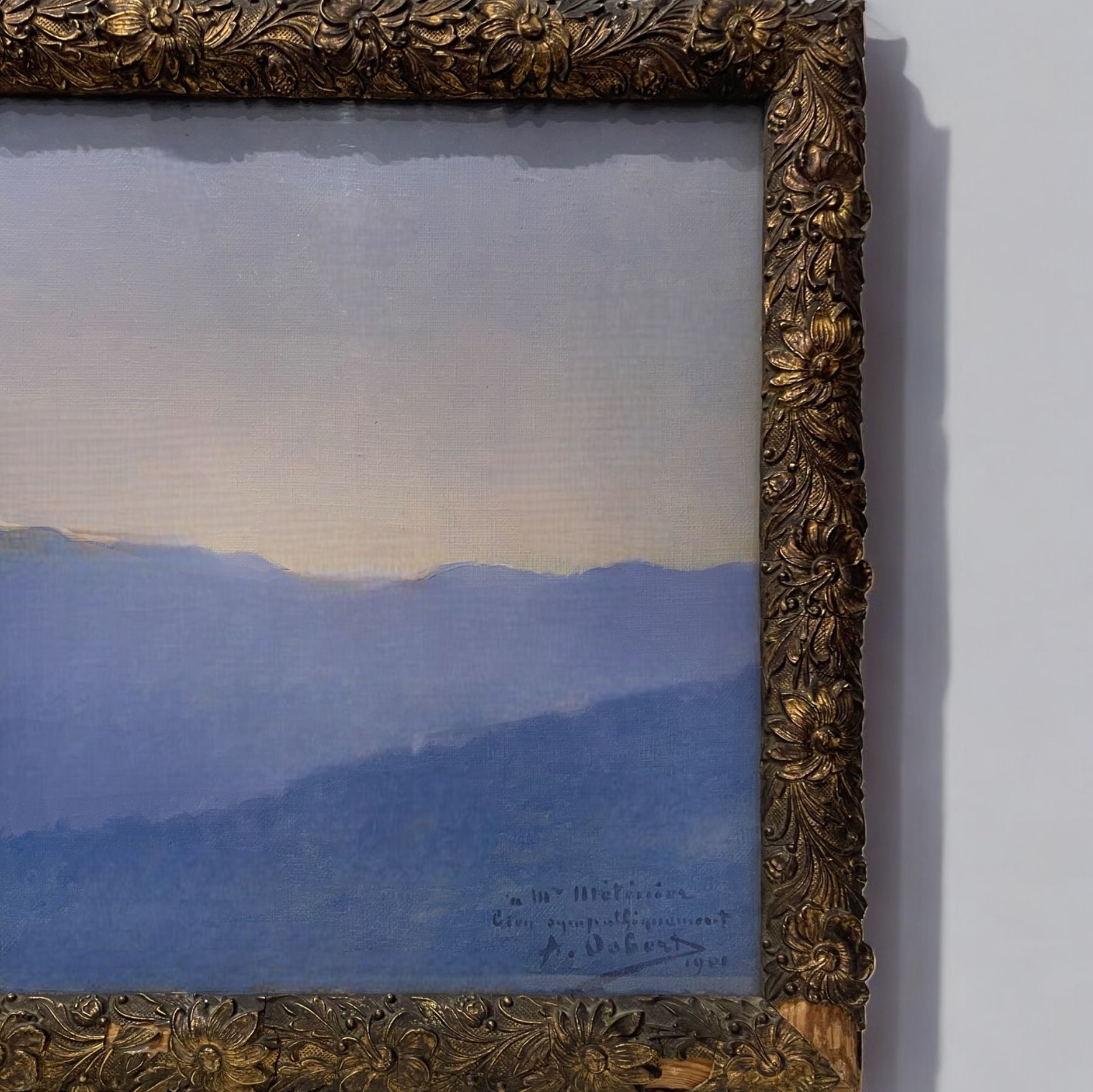
Alphonse Osbert's imprint on his time
Alphonse Osbert left an indelible mark on his era, when nature was transformed into a sanctuary of calm and contemplation.
In his works, he uses soft, misty hues, playing with shades of blue and violet to create mysterious atmospheres.
Each painting invites introspection, evoking twilight landscapes bathed in diffuse light, as if the last rays of day were slowly fading.
Natural forms take shape with singular gentleness, while the silhouettes of trees and mountains blend harmoniously into the horizon. The delicately reflected surface of the water reinforces this dialogue between sky and earth, revealing strata of depth where the immensity of nature unfolds.
True to his Symbolist aesthetic, Osbert avoids superfluous detail, preferring to evoke a state of mind. His fine, delicate brushwork captures the essence of natural elements, each touch transforming into visual poetry.
The ornate frame that surrounds his works contributes to this timeless ambience, reinforcing the impression of a space both enclosed and open to infinity.
In offering this poetic vision, Osbert encourages us to reflect on the beauty of the natural world and our place in it, where contemplation and silence reveal their full depth.
His signature
Not all Alphonse Osbert's works are signed.
Although there are variations, here's a first example of his signature:

Appraising your property
If you happen to own a work by Alphonse Osbert, ask for a free estimate using the form on our website.
A member of our team of experts and auctioneers will contact you promptly to provide you with an estimate of the value of your work, as well as any relevant information about it.
If you're thinking of selling your work of art, our specialists will also be on hand to help you find alternative ways of selling it at the best possible price.
Response in less than 24h
Related topics
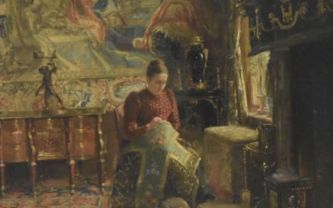
Rating and value of paintings by Louis Van...
Louis Van Engelen is a 19th-century Flemish artist who produced paintings that are highly regarded and valued on the auction market.
Read more >

Cote et valeur des sculptures, bustes, marbres de Prosper d'...
Prosper d'Épinay is a 19th-century French sculptor who produced works of increasing value at auction.
Read more >

Rating and value of paintings by Franz Def...
Franz Defregger is a painter of history and military scenes who has produced works that are highly valued at auction.
Read more >
Secure site, anonymity preserved
State-approved auctioneer and expert
Free, certified estimates

